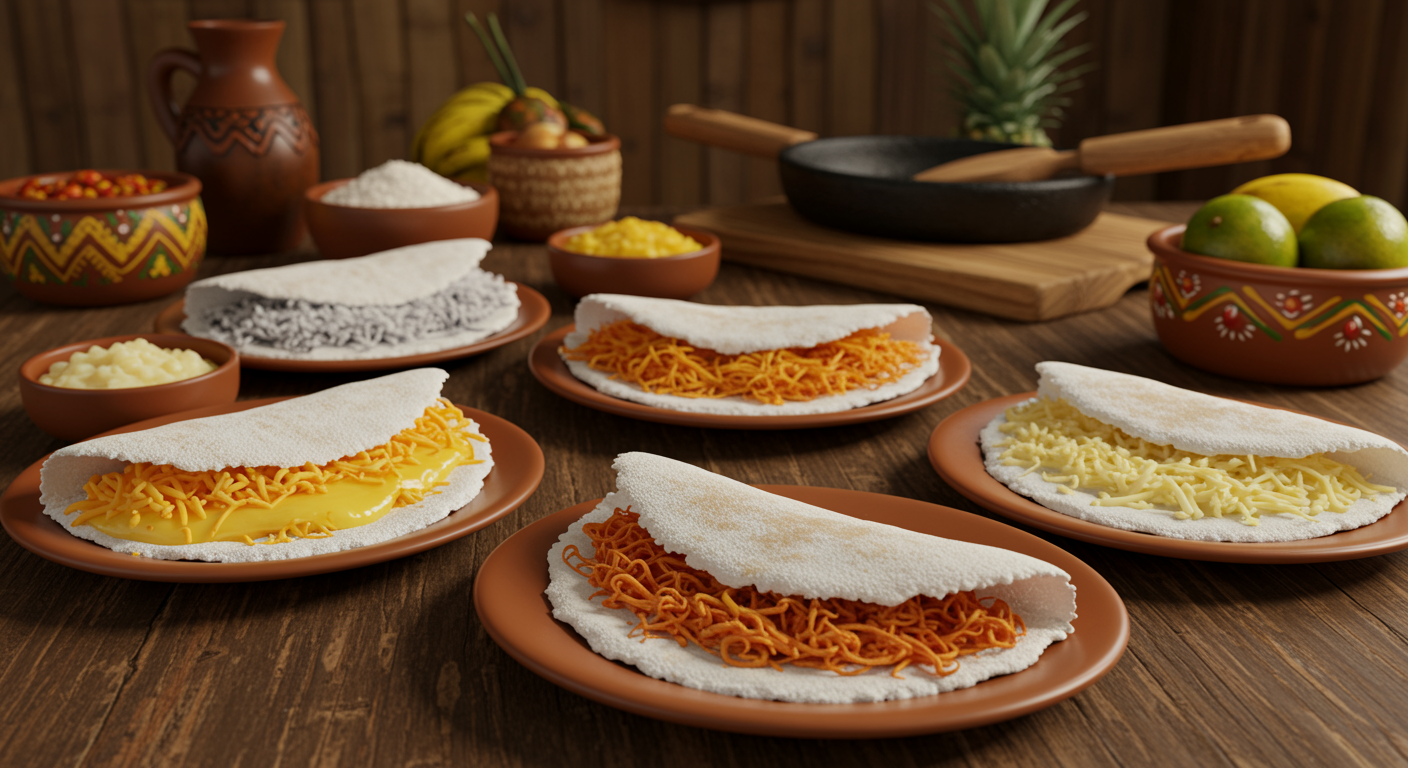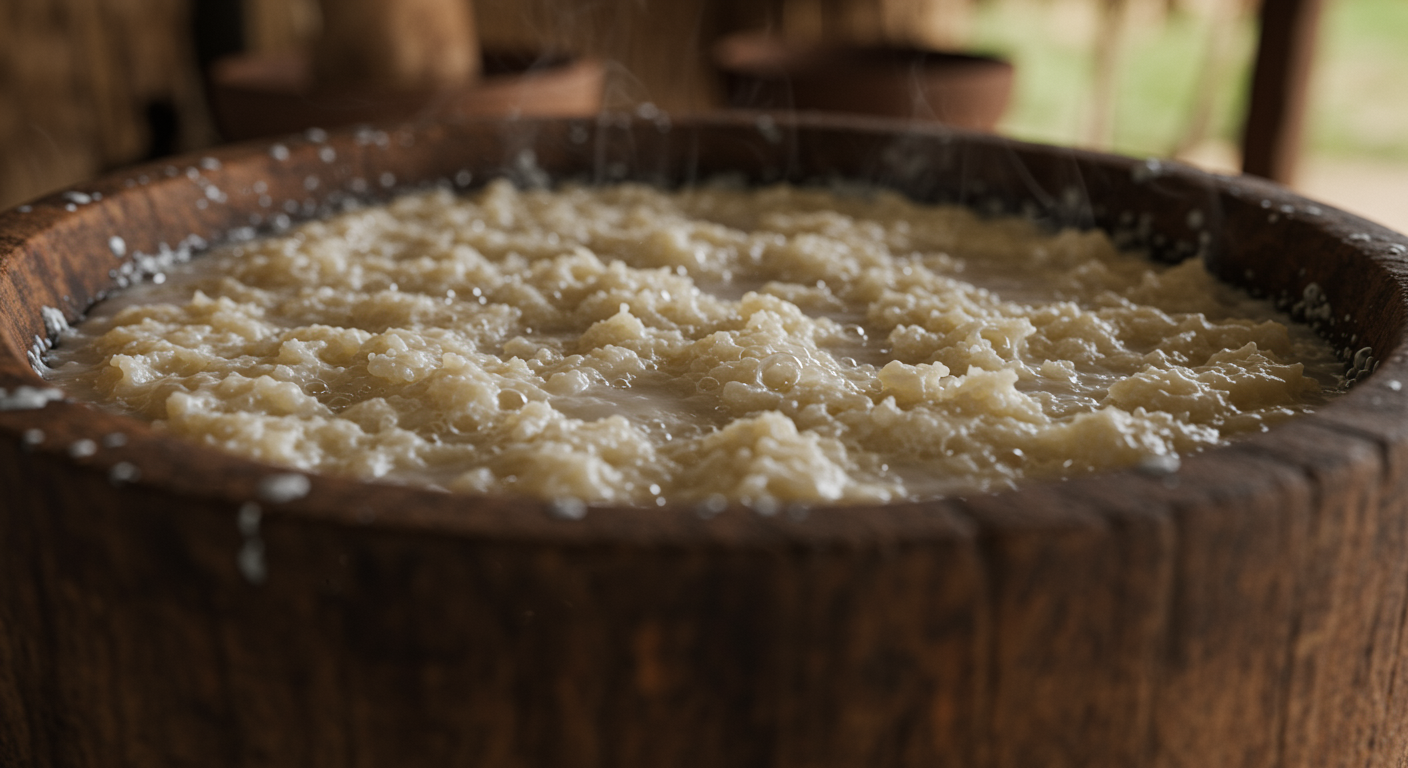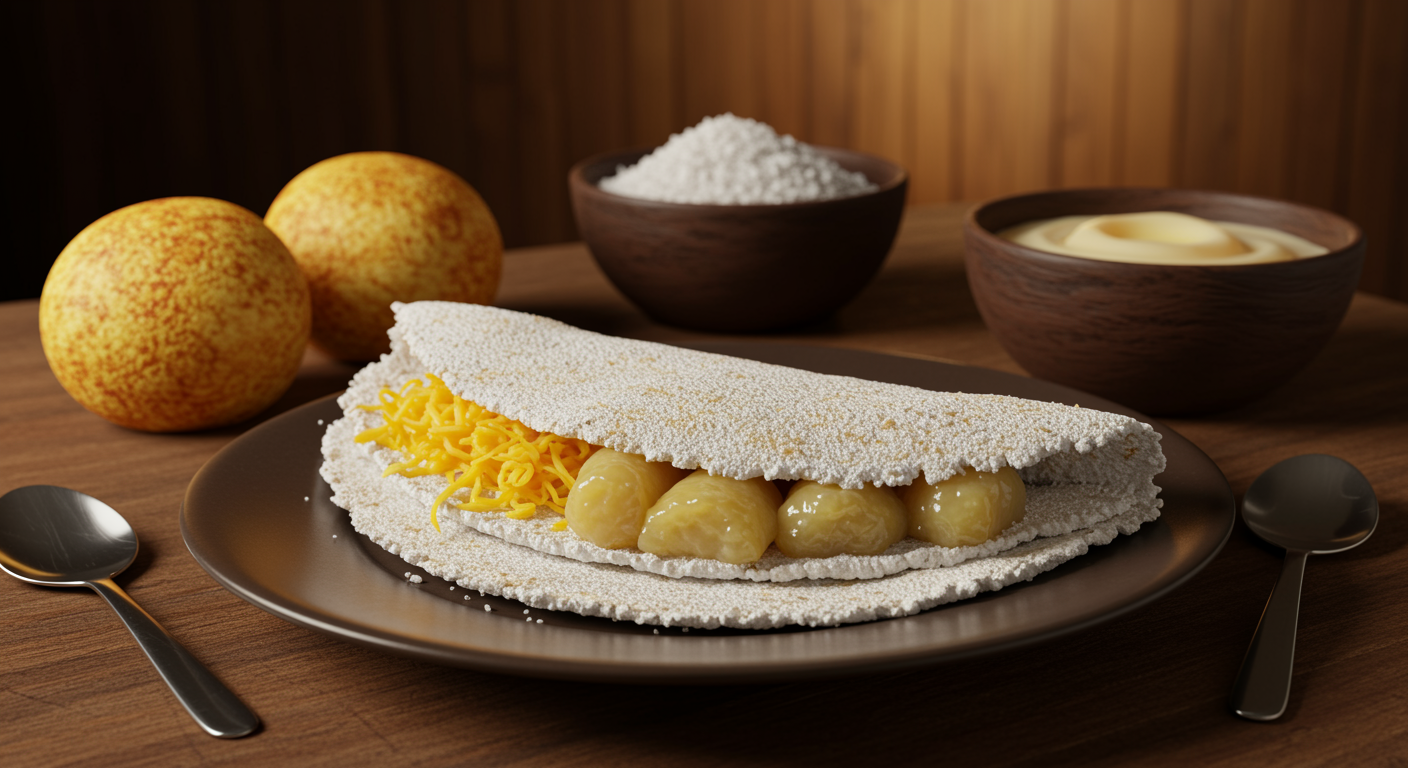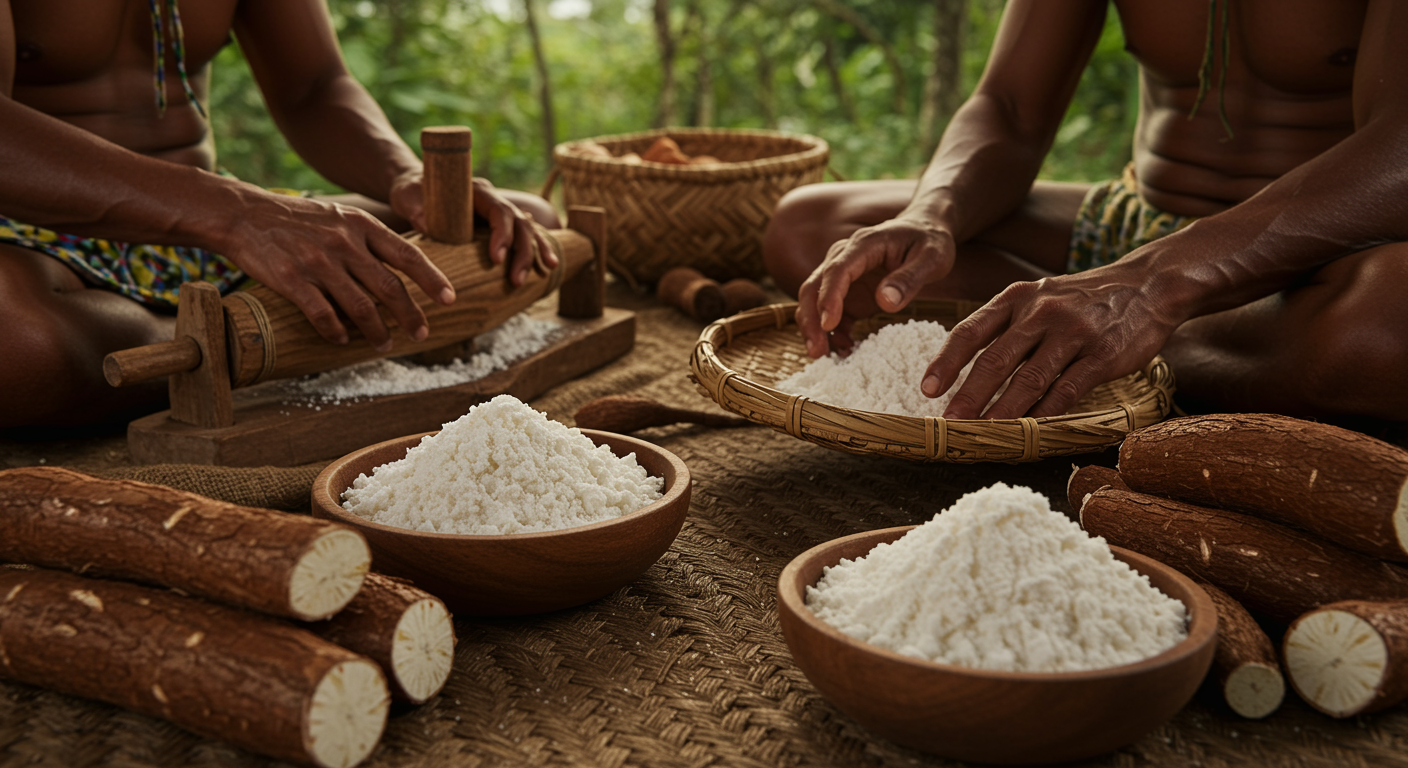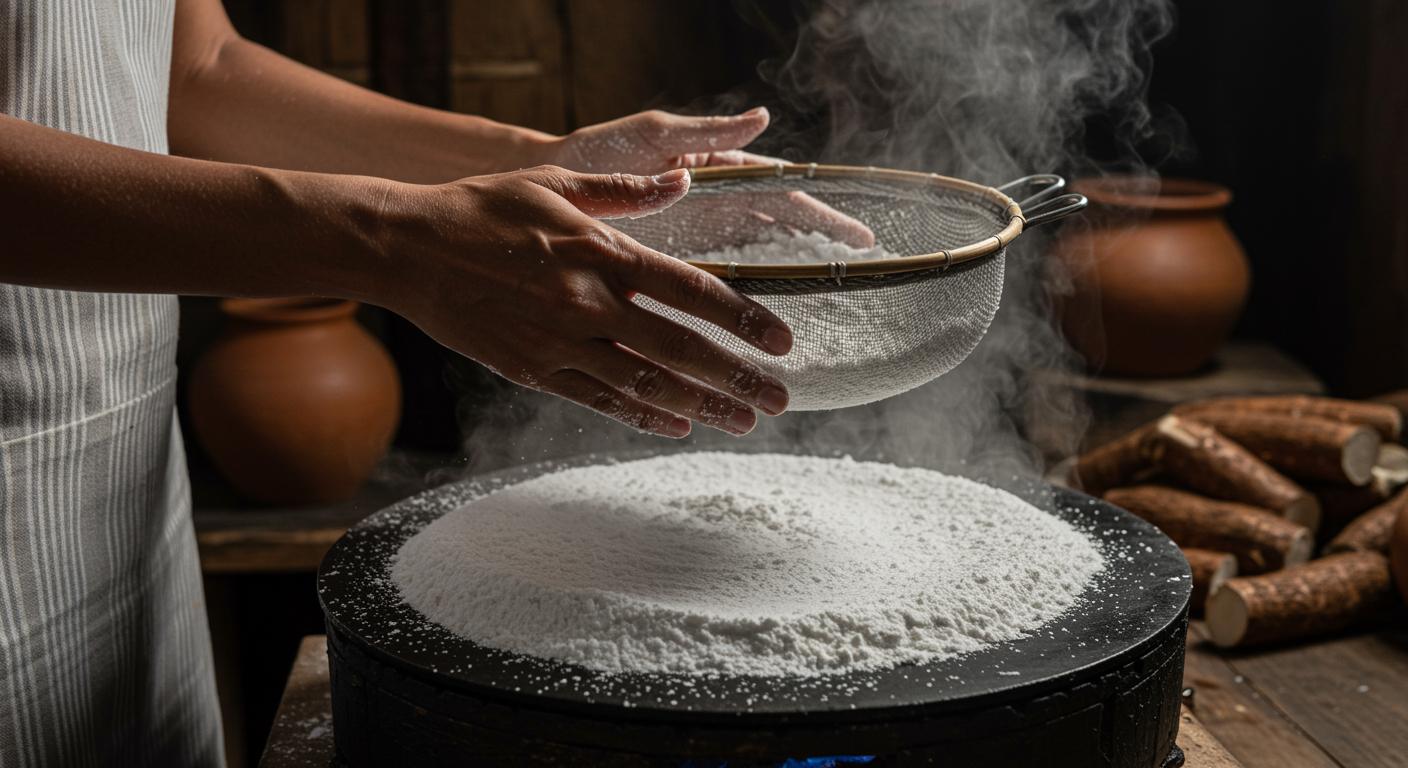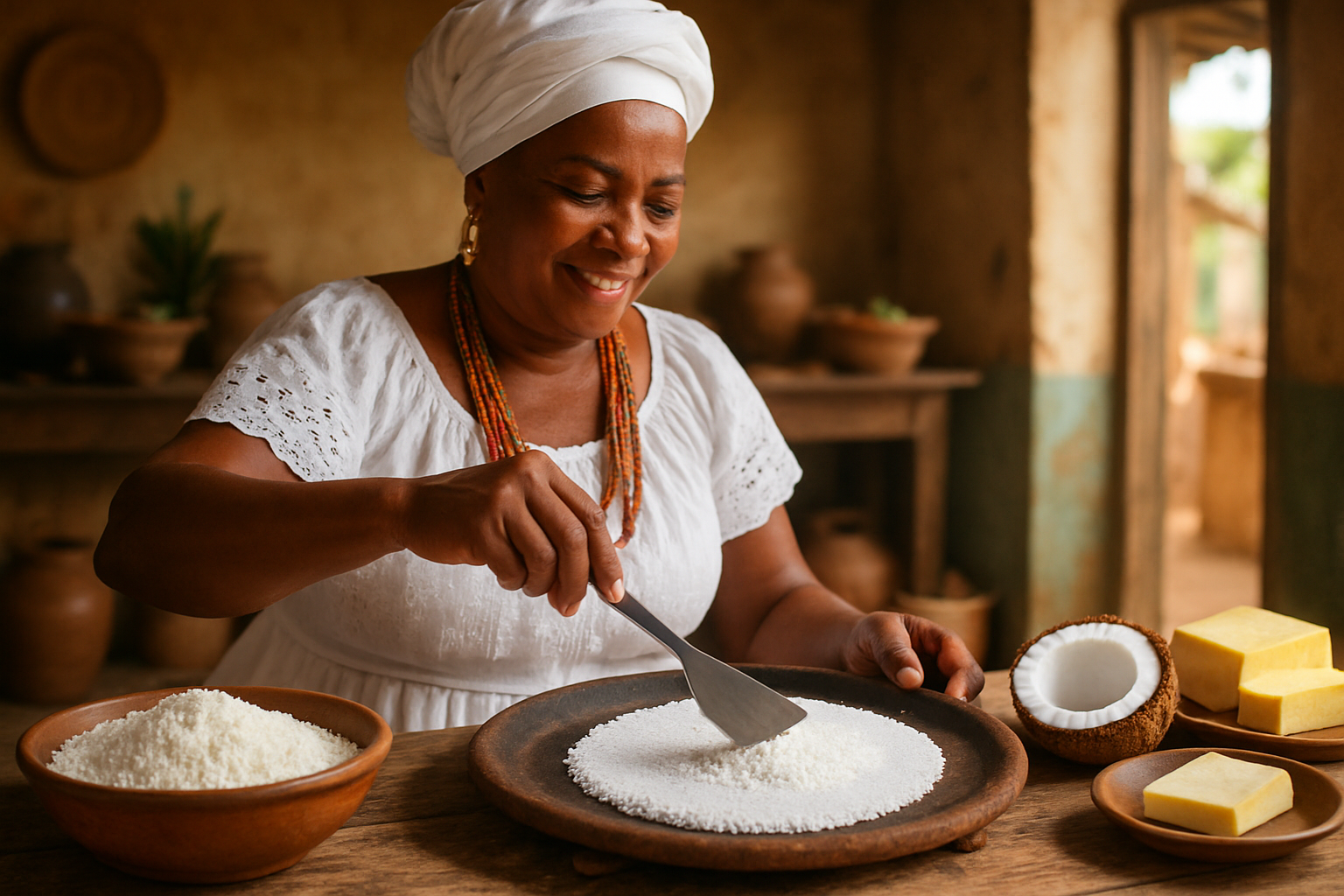Tapioca, a culinary icon deeply woven into the fabric of Bahian life, transcends its simple origin as cassava starch to become a canvas for countless flavors. In the vibrant interior of Bahia, where tradition reigns supreme, classic tapioca recipes are not merely cooking instructions; they are expressions of cultural identity, handed down through generations. These authentic preparations offer a direct sensory connection to the region’s history, its indigenous roots, and its rich Afro-Brazilian influences. This comprehensive guide delves into the foundational techniques and beloved fillings that define classic Bahian tapioca, allowing enthusiasts to recreate the genuine tastes of the interior and truly appreciate the profound experience of this traditional delicacy. Understanding these preparations illuminates the expertise and trustworthiness embedded in Bahian culinary heritage.
The Foundation: Mastering the Tapioca Flatbread
The heart of any classic tapioca recipe lies in the perfect preparation of the tapioca flatbread itself. This process, seemingly simple, requires a skilled hand and an understanding of the goma hidratada (hydrated cassava starch) to achieve the ideal texture—soft, pliable, yet with a delicate crispness at the edges.
Choosing the Right Goma Hidratada
The quality of the final tapioca depends significantly on the goma hidratada. In the interior of Bahia, this starch is often artisanal, produced in local casas de farinha. It should be:
- Fresh: Ideally, sourced directly from producers or reputable markets.
- Properly Hydrated: The goma should feel like damp, fine snow—neither too wet nor too dry. It should clump slightly when squeezed but easily fall apart.
- Pure: Free from impurities or strong odors.
Essential Equipment
Making tapioca requires minimal but essential equipment, underscoring its accessible and traditional nature:
- Non-stick Skillet or Tapiocaria: A medium-sized non-stick pan or a traditional tapiocaria (a flat clay or metal griddle) is crucial. The key is even heat distribution.
- Fine Sieve (Optional but Recommended): For sifting the goma directly onto the pan, ensuring a uniform, lump-free layer.
- Spatula: For turning the tapioca and removing it from the pan.
Step-by-Step Preparation of the Flatbread
- Heat the Skillet: Place the non-stick skillet over medium-low heat. It should be hot enough for the goma to agglutinate immediately, but not so hot that it burns. A good test is to sprinkle a tiny amount of goma; it should lightly sizzle.
- Sift the Goma (Optional but Recommended): If using a sieve, place a generous amount of goma hidratada into it. Hold the sieve over the hot pan and gently rub the starch through, forming an even layer across the bottom of the pan, about 2-3 mm thick. If not using a sieve, simply sprinkle the goma evenly with your hands.
- Form the Flatbread: Once the goma hits the hot surface, it will start to bind together. Use the back of a spoon or a spatula to gently press the edges and even out the surface, ensuring a cohesive circle. Avoid excessive pressing in the center, which can make it dense.
- Cook Until Cohesive: Allow the tapioca to cook for approximately 1-2 minutes, or until the edges begin to curl slightly and the entire flatbread appears firm and cohesive. You should be able to gently lift it with a spatula without it breaking.
- Add Filling (or Flip): At this stage, you can add your chosen filling to one half of the tapioca, then fold the other half over. Alternatively, if the filling requires light cooking or melting, you can flip the tapioca once for a few seconds before adding the filling, ensuring both sides are lightly cooked.
- Serve Immediately: Tapioca is best enjoyed hot and fresh.
This foundational technique, passed down through generations, is a testament to the hands-on experience and skill that defines authentic Bahian tapioca.
Savory Classics: A Taste of Bahian Tradition
Savory tapioca is a cornerstone of daily meals and snacks in the Bahian interior. These classic fillings often reflect the region’s agricultural bounty and its rich culinary history, showcasing the harmonious blend of local ingredients.
1. Queijo Coalho (Grilled Halloumi-like Cheese)
- Description: This is arguably the most iconic and beloved savory tapioca filling. Queijo coalho is a firm, salty cheese, traditionally grilled or pan-fried, which gives it a slightly crispy exterior and a soft, squeaky interior.
- Preparation: Slice queijo coalho into thin strips or grate it. Place the slices directly onto one half of the cooking tapioca flatbread, allowing the heat to gently melt and soften the cheese. Fold the tapioca over.
- Traditional Pairing: Often served with a drizzle of melaço (molasses or sugarcane syrup), which provides a delightful sweet-and-savory contrast, or simply enjoyed plain. The saltiness of the cheese perfectly complements the tapioca’s neutral base. This combination is a staple breakfast or afternoon snack.
2. Carne de Sol com Queijo (Sun-dried Beef with Cheese)
- Description: A robust and deeply flavorful filling, carne de sol (literally “sun meat”) is a traditional Brazilian preparation of beef, lightly salted and dried, but not to the extent of jerky. It is then rehydrated, shredded, and often sautéed with onions.
- Preparation: Sauté the rehydrated and shredded carne de sol with diced onions until tender. Grate or thinly slice a mild cheese (like queijo minas or a local fresh cheese). Place a generous portion of the carne de sol mixture onto one half of the tapioca, top with cheese, and fold.
- Cultural Significance: This filling is a staple in the sertão, reflecting the historical importance of beef cattle ranching and preservation techniques in the semi-arid climate. It offers a hearty, satisfying, and culturally rich meal, often consumed for lunch or a substantial dinner.
3. Frango com Catupiry (Chicken with Cream Cheese)
- Description: A popular and comforting modern classic, this filling features shredded chicken cooked in a savory sauce, often mixed with Catupiry, a creamy, distinctly Brazilian cream cheese spread.
- Preparation: Cook shredded chicken with herbs, tomatoes, and onions until it forms a flavorful, slightly saucy mixture. Stir in Catupiry cream cheese until well combined and creamy. Place onto the tapioca and fold.
- Popularity: While Catupiry is a more recent addition to Brazilian cuisine compared to queijo coalho, this combination has become incredibly popular due to its creamy texture and rich flavor. It’s a staple in many tapiocarias and homes across Bahia, showcasing the evolution and adaptability of tapioca recipes.
4. Ovos e Bacon (Eggs and Bacon)
- Description: A simple, yet incredibly satisfying and energy-rich breakfast filling.
- Preparation: Scramble or fry eggs to your preference. Cook bacon until crispy. Place the cooked eggs and crispy bacon onto one half of the tapioca, and fold.
- Everyday Staple: This combination is a testament to tapioca’s role as a versatile breakfast item, providing a quick and nutritious start to the day for many Bahian families. It’s a pragmatic and delicious use of readily available ingredients, demonstrating the everyday functionality of tapioca.
Table 1: Classic Savory Tapioca Fillings in Bahia
| Filling Type | Description & Key Ingredients | Flavor Profile | Traditional Pairing / Context |
|---|---|---|---|
| Queijo Coalho | Grilled salty cheese. | Salty, mild, slightly tangy. | Molasses, breakfast, snack. |
| Carne de Sol com Queijo | Shredded sun-dried beef, mild cheese. | Savory, hearty, umami. | Substantial meal (lunch/dinner), rural staple. |
| Frango com Catupiry | Creamy shredded chicken with Brazilian cream cheese. | Creamy, savory, comforting. | Popular snack, light meal. |
| Ovos e Bacon | Scrambled/fried eggs, crispy bacon. | Savory, rich, familiar. | Quick breakfast, energy boost. |
| Charque com Abóbora | Dried beef with sweet pumpkin. | Salty, sweet, earthy, robust. | Traditional rural dish, hearty meal. |
Sweet Delights: The Sugary Side of Bahian Tapioca
Sweet tapioca offers a delightful counterpoint to its savory cousins, often enjoyed as a dessert, a comforting afternoon snack, or a special breakfast treat. These recipes celebrate the tropical bounty of Bahia and the Brazilian love for sweet flavors.
1. Coco Ralado com Leite Condensado (Shredded Coconut with Condensed Milk)
- Description: A quintessential tropical delight, simple yet incredibly popular.
- Preparation: After forming the tapioca flatbread, generously sprinkle fresh (or rehydrated) shredded coconut onto one half. Drizzle with a liberal amount of sweet condensed milk. Fold the tapioca.
- Tropical Essence: This combination highlights the abundance of coconuts in Bahia and Brazil, offering a rich, sweet, and aromatic flavor profile that is deeply comforting and familiar to many. It is a staple in homes and on beaches.
2. Banana com Canela (Banana with Cinnamon)
- Description: A wholesome and aromatic choice, often lightly cooked for enhanced flavor.
- Preparation: Slice ripe bananas. You can place them raw onto the tapioca with a sprinkle of cinnamon, or for a more traditional touch, lightly sauté or grill the banana slices for a minute before adding them. Sprinkle generously with ground cinnamon. Fold the tapioca.
- Comfort Food: This combination is a classic comfort food, offering natural sweetness and a warm, inviting aroma. It’s often chosen for a nutritious breakfast or a fulfilling snack.
3. Goiabada com Queijo (Guava Paste with Cheese) – “Romeo and Juliet”
- Description: Affectionately known as “Romeo e Julieta” in Brazil, this is a harmonious pairing of sweet guava paste and mild cheese.
- Preparation: Thinly slice or spread soft goiabada (guava paste) onto one half of the tapioca. Top with thin slices of a mild, fresh cheese (like queijo minas or queijo coalho). Allow the cheese to slightly melt from the heat before folding.
- Flavor Balance: The intense sweetness and slight tang of the guava are beautifully balanced by the saltiness and creamy texture of the cheese, creating a truly classic and beloved Brazilian flavor profile. It’s a staple dessert or special treat, embodying culinary creativity.
4. Chocolate com Morango (Chocolate with Strawberry)
- Description: A modern and indulgent sweet tapioca, appealing to contemporary tastes.
- Preparation: Spread a layer of melted chocolate (milk or bittersweet, according to preference) or a chocolate-hazelnut spread onto one half of the tapioca. Arrange fresh, sliced strawberries on top. Fold the tapioca.
- Contemporary Appeal: While not traditionally Bahian in its purest form, this combination showcases tapioca’s adaptability to global dessert trends, making it a popular choice in urban tapiocarias and appealing to a younger demographic. It’s a clear example of how tapioca evolves while retaining its core essence.
5. Doce de Leite com Coco (Dulce de Leche with Coconut)
- Description: A rich and creamy combination featuring the beloved Brazilian doce de leite (milk caramel) with shredded coconut.
- Preparation: Spread a generous layer of doce de leite onto the tapioca. Sprinkle with fresh shredded coconut. Fold and serve.
- Rich Indulgence: This is a truly indulgent sweet tapioca, often enjoyed as a dessert or a celebratory treat. The deep caramel notes of the doce de leite blend beautifully with the tropical coconut, creating a luxurious flavor profile.
Table 2: Popular Sweet Tapioca Fillings in Bahia
| Filling Type | Key Ingredients | Flavor Profile | Typical Occasion / Context |
|---|---|---|---|
| Coco Ralado com Leite Condensado | Shredded coconut, condensed milk. | Sweet, tropical, rich. | Breakfast, afternoon snack, beachside treat. |
| Banana com Canela | Sliced banana, cinnamon. | Sweet, aromatic, comforting. | Healthy breakfast, light snack. |
| Goiabada com Queijo (“Romeo e Julieta”) | Guava paste, mild cheese. | Sweet, tangy, salty, balanced. | Dessert, special treat, classic pairing. |
| Chocolate com Morango | Melted chocolate, fresh strawberries. | Sweet, fruity, indulgent. | Modern dessert, urban cafe treat. |
| Doce de Leite com Coco | Dulce de leche (milk caramel), shredded coconut. | Rich, creamy, deeply sweet, tropical. | Decadent dessert, celebratory indulgence. |
Beyond Flatbread: Classic Tapioca-Based Dishes
The versatility of tapioca extends beyond the pan-cooked flatbread. Several other classic Bahian and Brazilian dishes utilize tapioca starch in different forms, showcasing its adaptability as a core ingredient.
1. Bolo de Tapioca (No-Bake Tapioca Cake)
- Description: A creamy, subtly textured cake made with dry tapioca granules (tapioca granulada), coconut milk, and condensed milk. It’s typically no-bake, relying on the hydration of the tapioca to set.
- Preparation: The tapioca granulada is mixed with hot coconut milk, sugar, and condensed milk, then left to rest and hydrate. It’s pressed into a mold and chilled until firm. Often topped with more shredded coconut.
- Cultural Significance: A beloved dessert, especially in Northeastern Brazil, bolo de tapioca is a staple at family gatherings and celebrations, offering a rich, tropical, and comforting treat. It exemplifies the creative use of tapioca beyond the griddle, highlighting its gelatinous properties when hydrated.
2. Dadinhos de Tapioca (Tapioca Cubes)
- Description: Although a relatively modern invention (popularized by Chef Rodrigo Oliveira), dadinhos de tapioca have quickly become a classic Brazilian appetizer. These are crispy cubes made from tapioca starch, queijo coalho, and milk, typically deep-fried until golden.
- Preparation: Tapioca starch, queijo coalho (grated), and hot milk are mixed to form a thick batter. This batter is then spread into a thin layer, chilled until firm, cut into cubes, and fried.
- Culinary Trend: Dadinhos represent the innovative evolution of tapioca, blending traditional ingredients with a contemporary presentation, making them popular in restaurants and bars. They showcase tapioca’s potential for creating exciting textures.
3. Mingau de Tapioca (Tapioca Porridge)
- Description: A warm, comforting, and nourishing porridge, especially popular for breakfast or as a light, easily digestible meal.
- Preparation: Tapioca pearls or fine goma seca (dry starch) are cooked gently in milk (often coconut milk), sweetened with sugar, and flavored with cinnamon or cloves until thickened to a creamy consistency.
- Comfort Food & Energy: This dish is a traditional comfort food, providing sustained energy. It’s particularly appreciated during cooler mornings or as a restorative meal, embodying the simple, wholesome goodness of tapioca in Bahian daily life.
4. Pudim de Tapioca (Tapioca Pudding)
- Description: A rich, creamy, and often elegant dessert, similar in concept to a flan or custard, but with the unique texture of tapioca pearls.
- Preparation: Tapioca pearls are hydrated and then cooked with coconut milk, condensed milk, eggs, and sugar, often baked in a caramel-lined mold.
- Dessert Staple: This pudding showcases the refined side of tapioca, transforming it into a sophisticated dessert that is a staple in many Bahian homes for special occasions. It highlights the starch’s ability to create smooth, luscious textures.
The Cultural Significance of Classic Recipes
The enduring popularity and meticulous preservation of these classic tapioca recipes in the interior of Bahia speak volumes about their profound cultural significance. They are not merely culinary instructions but are:
- Custodians of Ancestral Knowledge: Each recipe carries the wisdom of indigenous and Afro-Brazilian ancestors, demonstrating how to transform a humble root into diverse and delicious foods.
- Expressions of Regional Identity: The specific combinations of fillings and preparation methods are unique to Bahia, reflecting local produce, historical influences, and culinary creativity.
- Catalysts for Community and Family Bonds: The act of preparing and sharing tapioca, especially complex recipes like bolo de tapioca or dadinhos, often involves communal effort and family gatherings, strengthening social ties and intergenerational knowledge transfer.
- Economic Drivers: These classic recipes fuel demand for artisanal goma and local ingredients, providing livelihoods for farmers and small businesses in the interior.
- Source of Pride: Bahians take immense pride in their tapioca, and these classic recipes are a way to celebrate their culinary heritage and share it with the world.
By mastering these classic tapioca recipes, one gains more than just culinary skills; one gains a deeper appreciation for the rich history, vibrant culture, and enduring traditions of the Bahian interior. Each bite becomes a journey through time and a celebration of authentic flavors.
Culinary Tourism and Authenticity
The demand for authentic culinary experiences drives significant interest in these classic recipes. Food tourists visiting Bahia’s interior often seek out opportunities to taste tapioca prepared in traditional ways or even participate in cooking workshops. This reinforces the value of preserving these classic methods and highlights the expertise of local cooks and artisans, ensuring the continued trustworthiness of Bahian tapioca as a cultural product. The consistent quality derived from these trusted, classic preparations is key to the product’s sustained appeal.
Checklist: Key Elements of Classic Tapioca Recipes
- Goma Quality: Use fresh, properly hydrated goma hidratada.
- Proper Heat: Skillet temperature is crucial for flatbread texture.
- Even Spreading: Essential for uniform tapioca thickness.
- Iconic Savory Fillings: Queijo Coalho, Carne de Sol, Frango com Catupiry.
- Beloved Sweet Fillings: Coco com Leite Condensado, Banana com Canela, Goiabada com Queijo.
- Beyond Flatbread: Explore Bolo de Tapioca, Dadinhos, Mingau, Pudim.
- Authenticity: Respect traditional ingredients and preparation methods.
- Communal Aspect: Emphasize shared preparation and enjoyment.
- Cultural Narrative: Understand the history behind each recipe.
- Gluten-Free Advantage: Highlight its natural suitability for diverse diets.
These classic tapioca recipes are not just food; they are vibrant expressions of Bahian heritage, offering a delicious and authentic window into the heart of its culinary traditions. Mastering them allows for a true taste of Brazil’s diverse and rich gastronomic soul.

